Wrigley Field
Introduction
Text-to-speech Audio
Images
The famous outfield bleachers and scoreboard at Wrigley Field.
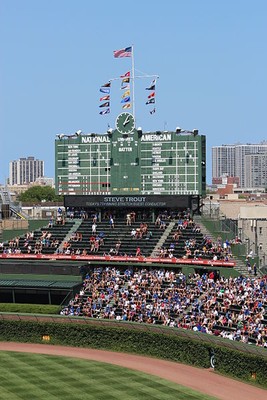
Wrigley Field's famous marquee during the stadiums centennial season.
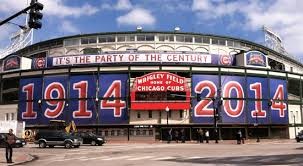
Joa the bear cub, the guest of honor at the first home game in Chicago Cubs history in 1916.
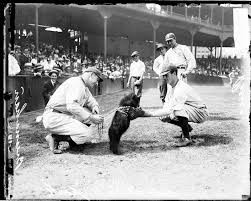
Aerial view of Wrigley Field after completion of the outfield renovations in 1937.
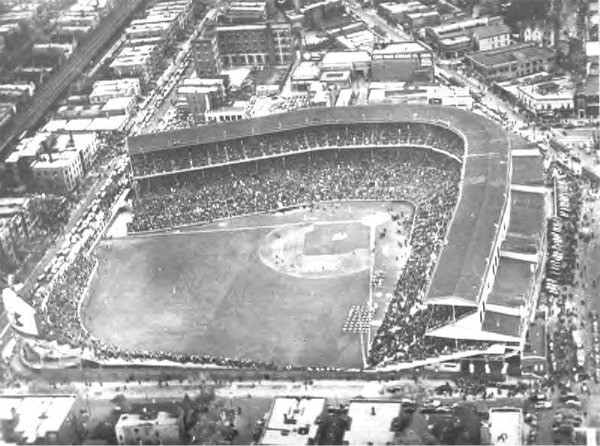
Construction of the famous outfield bleachers and scoreboard in 1937.
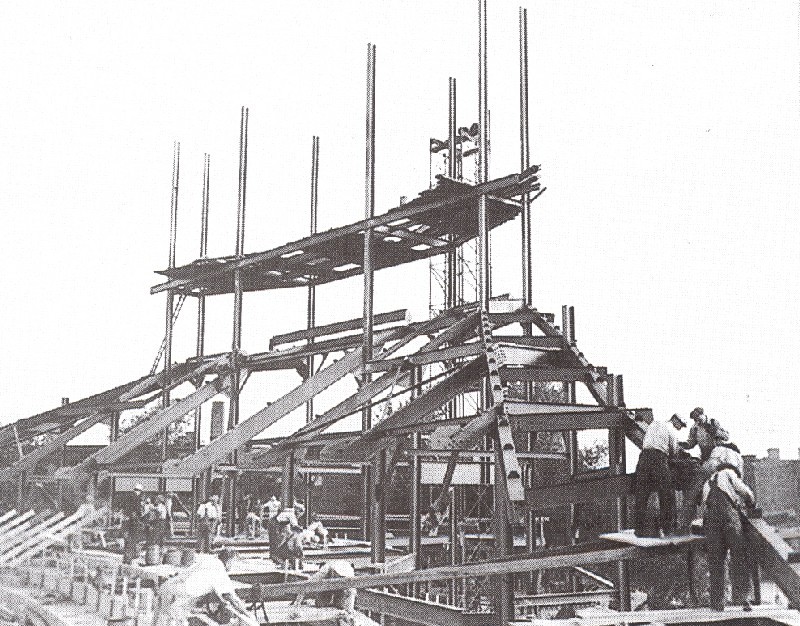
Modern-day Wrigley Field.
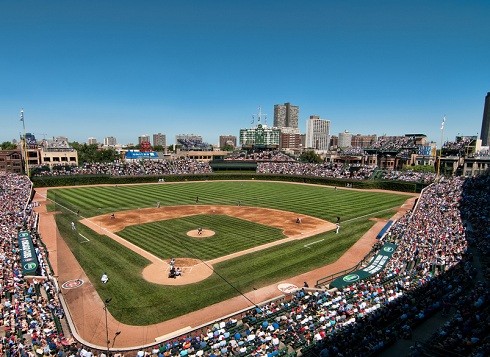
Modern-day Wrigley Field.

The flag that flies after every Cub home win.
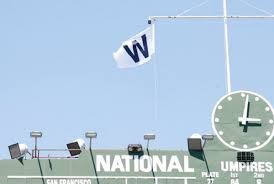
View outside of Wrigley Field before the first night game on August 8, 1988.
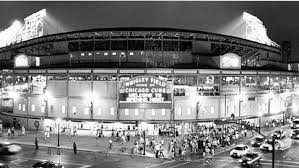
Chicago Cubs celebrating their 2016 World Series Championship to end the 108 year drought.
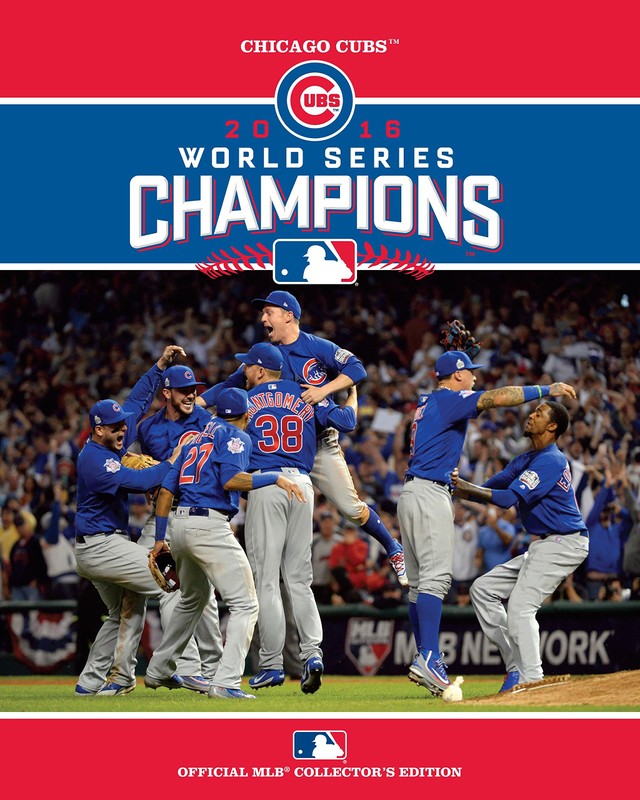
The Chicago Cubs celebrating during their World Series parade outside of Wrigley Field.
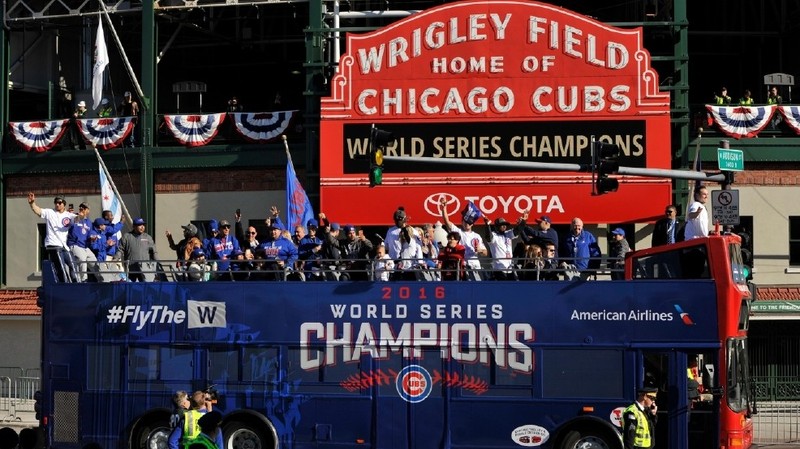
Backstory and Context
Text-to-speech Audio
Wrigley Field, the home of the Chicago Cubs Major League Baseball team, is a stadium with a rich and storied history. It is the site of many famous moments in sports history and is a revered and beloved landmark for Chicagoans and tourists to the city alike.
Built in 1914, Wrigley Field is the second-oldest MLB ballpark in the country, just behind Fenway Park in Boston. Located at 1060 West Addison Street, Wrigley Field was constructed on land previously occupied by a seminary. Originally called Weeghman Park after landowner Charles H. Weeghman, the stadium seated 14,000 occupants and cost $250 thousand dollars to build. Between the infield and outfield, the stadium boasted 4,000 yards of soil and 4 acres of bluegrass.
The stadium was called Cubs Park upon the sale of the team from Weeghman to the Wrigley family in 1920 with the official name being changed to Wrigley Field in 1926 in honor of team owner William Wrigley, Jr. The famous Wrigley Field marquee was constructed in 1934 and remains intact and fully functional today. In 1937, the outfield was renovated to accommodate more occupants, thus the bleachers were added as well as the famous center field scoreboard. Despite numerous renovations to the stadium over the years, the original scoreboard remains intact and is still in use today. 1937 was also the year the infamous ivy was planted. Bill Veeck, treasurer for the Cubs (whose late father had once been the president of the Cubs) purchased and planted bittersweet vines from the top to the bottom of the wall and ivy at the base of the wall. This unique touch is a beloved part of Wrigley Field’s history and is recognizable to baseball fans around the world (Chicago Cubs). The Ivy was put in not only as a new renovation to make Wrigley look better, but it also give a little bit of padded protection when outfielders run into the walls.
Over the years, Wrigley Field has grown to seat 41,160 occupants. Stadium lighting was added in 1988 to allow for night games to be played. The first night game at Wrigley Field took place on August 8, 1988, with Rick Sutcliffe being throwing out the opening pitch of the game against the Philadelphia Phillies. The Cubs were leading 3-1 in the fourth inning when downpours covered Chicago, causing the game to be called. Although it was the first night game at Wrigley Field, the game did not count toward the 1988 season. Luckily, the next night is when the first complete night game took place at Wrigley Field, with the Cubs defeating the Mets 6-4 (Cubs Get Lights at Wrigley Field). From 1994-95, 63 private boxes were also added to the stadium. After the completion of the 2005 baseball season, the outfield bleachers were expanded and a restaurant was added. The restaurant, which serves local cuisine like the famous Chicago-style hot dogs and features a bleacher patio that can seat up to 600 guests, can be rented out for private engagements (Chicago Cubs).
Wrigley Field is also on of the only ball parks where neighborhood residents can sit ion their roof tops and watch the games. It wasn't a problem for the Cubs until the 1990s when the owners of the apartments put bleachers on the roofs and were charging people to watch the cubs games from the roof. This later was settled because the owners of the apartment complexes agreed to share some of the proceeds with the Cubs. In return the Chicago Cubs did not end up putting up a fence to block the view. Later on, Cubs owners have even bought some of the apartments for themselves.
Wrigley Field has seen some of the greatest moments in baseball history and is the home of many first for baseball. Wrigley Field was the first MLB stadium to feature organ music as well as the first ballpark to allow spectators to keep foul balls. Wrigley Field was the first ballpark to have permanent concession stands. The stadium was also the location of the 1947, 1962, and 1990 All-Star Baseball Games as well as games from the 1918, ’29, ’32, ’35, ’38, and '45 World Series.' Babe Ruth called his shot at Wrigley Field as well. Ruth did this during the 1932 World Series. Some argue that he didn't actually call his shot but was instead just pointing at the Cubs dugout, but no matter what happened, it happened at Wrigley Field. The highest scoring game in baseball history was played at Wrigley Field between the Cubs and the Philadelphia Phillies on August 15, 1922, that ended with a final score of 26-23. The first home run of the 1938 World Series was scored at Wrigley Field by a 17 year-old Lou Gherig. While no batted baseballs have ever hit the famous scoreboard, golfer Sam Snead did manage to hit it with a golf ball when he teed off on home plate before the 1951 season opener against the Cincinnati Reds. Baseball legend Pete Rose reached his 4,191st career hit, tying him with Ty Cobb for most hits in baseball history. A proud memory for Cubs fans was broadcaster Harry Caray’s singing of “Take Me Out to the Ball Game” during the 7th inning stretch (Wrigley Field, Chicago Cubs ballpark).
Wrigley Fields most recent achievement was there 2016 World Series championship. The Chicago Cubs held the record for the longest World Series drought. They had not won a World Series in 108 years. The last time they had won a National League pennant was 71 years. After not winning a World Series since 1908, this championship was more than just a win for the team but a win foe the city as well. This win gave the city hope and was a sign of rebirth in the city of Chicago and for Wrigley Field. They now had a winning team. In the 2016 World Series, they defeated the Cleveland Indians 8-7 in game seven.
Sources
Wrigley Field / Cubs Park / Weeghman Park Historical Analysis by Baseball Almanac (Wrigley Field / Cubs Park / Weeghman Park Historical Analysis by Baseball Almanac) http://www.baseball-almanac.com/stadium/wrigley_field.shtml WRIGLEY FIELD (Wrigley Field, Chicago Cubs ballpark)http://www.ballparksofbaseball.com/nl/WrigleyField.htm Wrigley Field Information - History (Chicago Cubs) http://chicago.cubs.mlb.com/chc/ballpark/information/index.jsp?content=history The Cubs Get Lights at Wrigley Field http://www.chicagotribune.com/news/nationworld/politics/chi-chicagodays-wrigleylights-story-story.html Overview of 1060 Project/Renovations to Historic Wrigley Field http://chicago.cubs.mlb.com/chc/restore-wrigley/our-vision/overview/
“10 Fast Facts About Wrigley Field.” Mental Floss, October 15, 2017. https://www.mentalfloss.com/article/19192/10-facts-about-wrigley-field.
Sullivan, Paul. “Chicago Cubs Win World Series Championship with 8-7 Victory over Cleveland Indians.” chicagotribune.com, November 3, 2016. https://www.chicagotribune.com/sports/cubs/ct-cubs-win-world-series-sullivan-spt-1103-20161102-story.html.
“Wrigley Field History.” MLB.com. Accessed December 2, 2019. https://www.mlb.com/cubs/ballpark/information/history.
